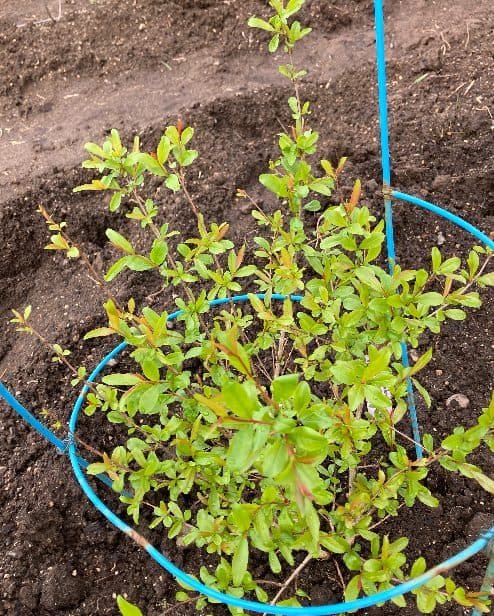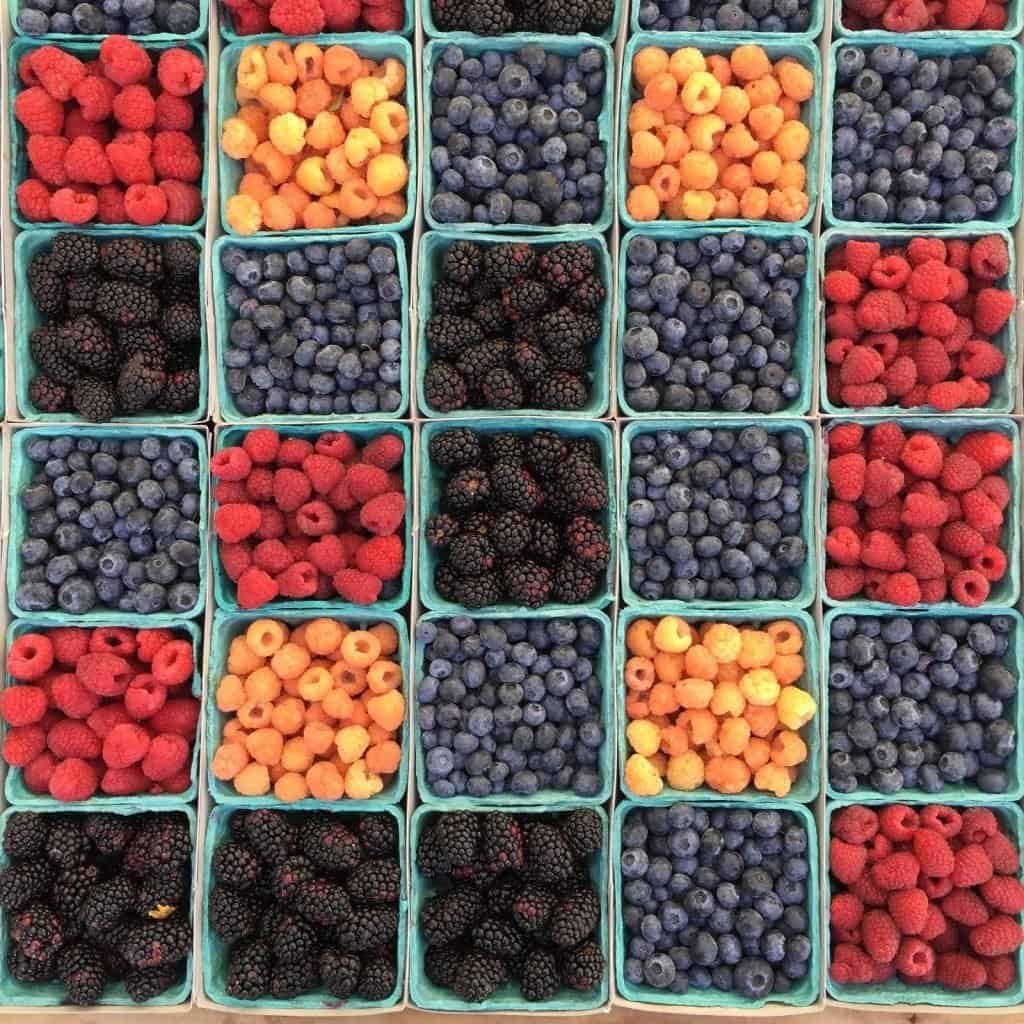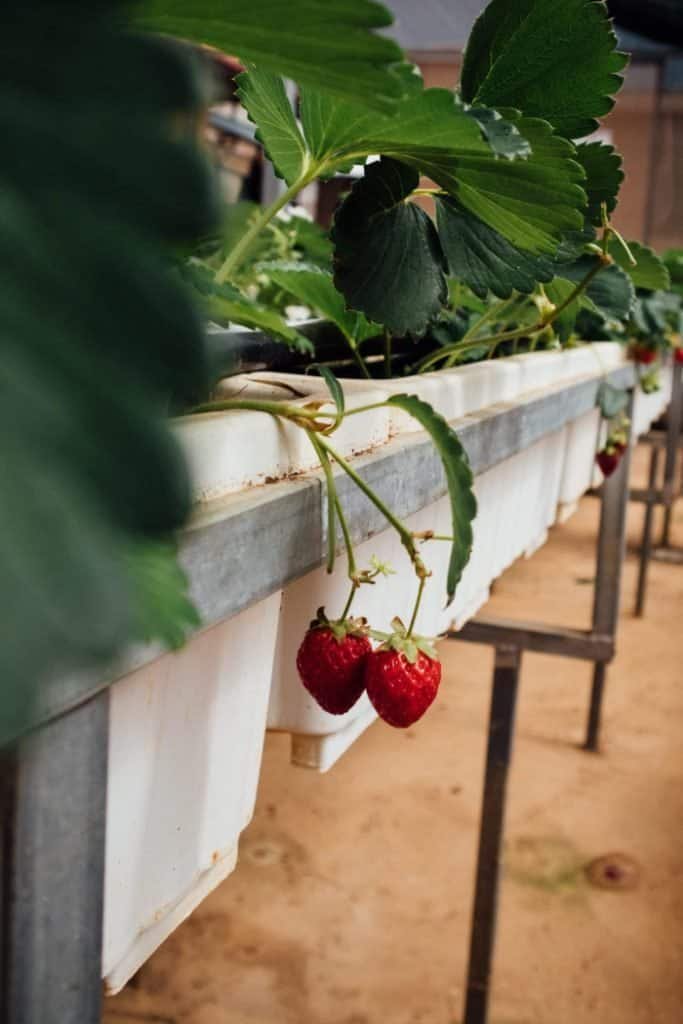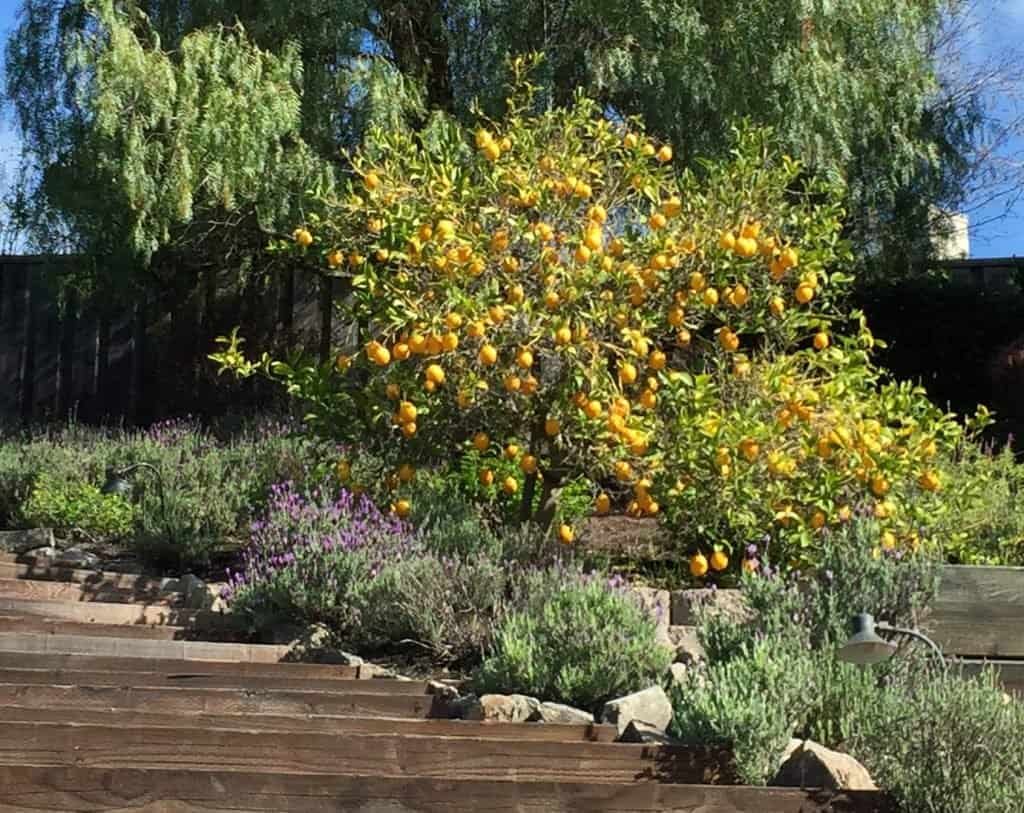This year I have purchased two Pomegranate trees to add to my garden since we love eating pomegranates and found they can grow and produce fruit in the cooler climate of the Northwest. The first is Azadi and the other is a Sweet Pomegranate, both of these are able to grow in cooler climates.

My tree is only a one-year-old bush right now so it will not produce fruit for several more years. I have heard from others that when you purchase a Pomegranate tree you should not waste your money on a larger one since they grow so fast, a smaller plant will grow quickly to produce fruit.
I will share in this article what pomegranates you can grow in your climate and how to grow them to produce a good crop each year.

Keep watch as I post the progress of my new fruit adventure with Pomegranates.
Pomegranates can be pruned to grow into a tree with one main trunk or left to grow naturally into a bush structure.
How to Grow the Best Pomegranates in your climate & Planting

Find a location in your yard that receives the most sunlight and has good drainage to plant your pomegranate tree.
The best time to plant a pomegranate is in the Spring or in the Fall this will allow the plant to acclimate and reduce stress on the plant.
If you plant in early Summer pick a time when the temperatures are the coolest and I recommend mucking in your pomegranate to help it to make the transition into your garden.
Fertilizing your Pomegranate trees
Pomegranate trees are relatively low-maintenance, but they do require some basic care and fertilization to thrive. Here are some tips for fertilizing and caring for pomegranate trees:
- Soil: Pomegranate trees prefer well-draining soil with a pH of 5.5 to 7.0. If your soil is too acidic, you can add lime to raise the pH. If your soil is too alkaline, you can add sulfur to lower the pH.
- Fertilizer: Pomegranate trees benefit from regular fertilization. Use a balanced fertilizer with equal amounts of nitrogen, phosphorus, and potassium, such as a 10-10-10 or 16-16-16 formula. Apply the fertilizer in early spring, just before the tree begins to grow new leaves.
- Watering: Pomegranate trees need regular watering, especially during hot, dry weather. Water deeply once a week, making sure the soil is moist but not waterlogged.
- Pruning: Pomegranate trees benefit from annual pruning to promote healthy growth and fruit production. Prune in late winter or early spring, removing any dead, diseased, or damaged branches, as well as any branches that are crossing or rubbing against each other.
- Pest control: Pomegranate trees are relatively pest-resistant, but they can be susceptible to aphids, scales, and mealybugs. Monitor your tree regularly for signs of pests, and treat them with insecticidal soap or horticultural oil if necessary.
By following these tips, you can help your pomegranate tree grow and produce healthy, delicious fruit.
Varieties of Pomegranates to grow in your climate
Pomegranates are a versatile fruit that can grow in a wide range of climates, from subtropical to temperate. Here are some of the best pomegranate varieties to grow in different climates:
- Subtropical climate: If you live in a subtropical climate with hot, humid summers and mild winters, some of the best pomegranate varieties to grow include Wonderful, Eversweet, and Ambrosia. These varieties are known for their large, juicy seeds and sweet, tangy flavor.
- Mediterranean climate: In a Mediterranean climate with hot, dry summers and mild, wet winters, some of the best pomegranate varieties to grow include Granada, Parfianka, and Salavatski. These varieties are known for their deep red color and sweet, tart flavor.
- Desert climate: In a desert climate with hot, dry summers and cool, dry winters, some of the best pomegranate varieties to grow include Desertnyi, Afganski, and Kazake. These varieties are known for their high sugar content and resistance to heat and drought.
- Temperate climate: If you live in a temperate climate with mild summers and cold winters, some of the best pomegranate varieties to grow include Azadi, Sweet, Russian 26, Red Silk, and Utah Sweet. These varieties are known for their hardiness and ability to tolerate colder temperatures.
Harvesting your Pomegranates
Knowing when to harvest pomegranates is important to ensure that the fruit is ripe and ready to eat. Here are some tips to help you determine when to harvest your pomegranates:
- Timing: Pomegranates typically ripen in late summer or early fall, depending on the climate and growing conditions. The fruit will start to turn from green to yellowish-red as it ripens.
- Size: Pomegranates should be plump and round when they are ripe, with a diameter of about 2.5 to 5 inches. The skin should be firm and smooth, with no soft spots or blemishes.
- Color: The skin of a ripe pomegranate should be a deep, rich red color, although some varieties may have a pinkish or yellowish hue. The fruit should feel heavy for its size.
- Sound: When you tap a ripe pomegranate, it should make a metallic sound, like tapping on a drum. If the fruit sounds dull or thuds when tapped, it may not be ripe yet.
- Taste: The best way to tell if a pomegranate is ripe is to taste it. The seeds inside the fruit should be juicy and sweet-tart, with a slightly crunchy texture.
When harvesting your pomegranates, use a pair of pruning shears to cut the fruit from the tree, leaving a small stem attached. Store the fruit in a cool, dry place for up to several weeks, or refrigerate for longer storage. Pomegranates can also be frozen for later use.
It’s important to note that while some pomegranate varieties are better suited to certain climates than others, many pomegranate varieties can adapt to a range of climates. Be sure to choose a variety that is well-suited to your particular climate and growing conditions.
How to Grow the Best Pomegranates in your climate will help you to determine what you can plant based on your climate to enjoy growing pomegranates.




